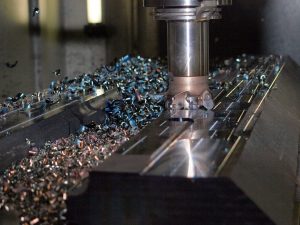
Even if you have little or no knowledge about the manufacturing industry, you’ve probably heard the term “machining.” It’s used extensively by manufacturing companies to convert raw materials into finished products. Based on the name alone, you may assume that machining simply refers to the use of any machine. While machining certainly requires the use of a machine, though, this isn’t the actual definition.
What Is Machining?
The term “machining” refers to a collection of machine-based manufacturing processes that involve the controlled removal of material from a workpiece for the purpose of changing its size and/or shape. With machining, manufacturing companies use a machine to remove material from a workpiece until they achieve the desired size and shape.
A manufacturing worker who specializes in machining is known as a machinist. Machinist are well-trained, and often certified, to use one or more machines. As a result, they have the skills and knowledge necessary to perform machining processes on workpieces.
What Type of Materials Does Machining Support?
Machining supports a variety of different materials. It’s most commonly performed on metal workpieces, including iron, steel, aluminum, bronze and copper. With that said, workpieces made of nonmetal materials may also be machined, including wood, ceramics, plastic and composites. Generally speaking, workpieces made of harder materials required greater work to machine. A steel workpiece, for example, may require a sharper cutting tool, as well as greater force, than a wooden workpiece.
Overview of the Different Machining Processes
Machining processes can be broken down into three primary categories: turning, milling and drilling. Turning is a machining process that uses a stationary cutting tool to remove material from a rotating workpiece. Milling, on the other hand, is a machining process that uses a rotating cutting tool to remove material from a stationary workpiece. Drilling is a machining process that uses a rotating cutting tool known as a drill bit to cut a threaded hole in a workpiece.
There are also miscellaneous machining processes that don’t fall under one of the three aforementioned categories of machining processes. Burnishing, for instance, is a machining process that relies on sliding contact to deform the surface of a workpiece. Burnishing is typically used on plastic workpieces to produce a smoother surface. Miscellaneous machining processes like burnishing are unique because they generally don’t produce chips. Turning, milling and drilling all produce chips as a byproduct. Miscellaneous machining processes, however, don’t produce any chips or swarf.
